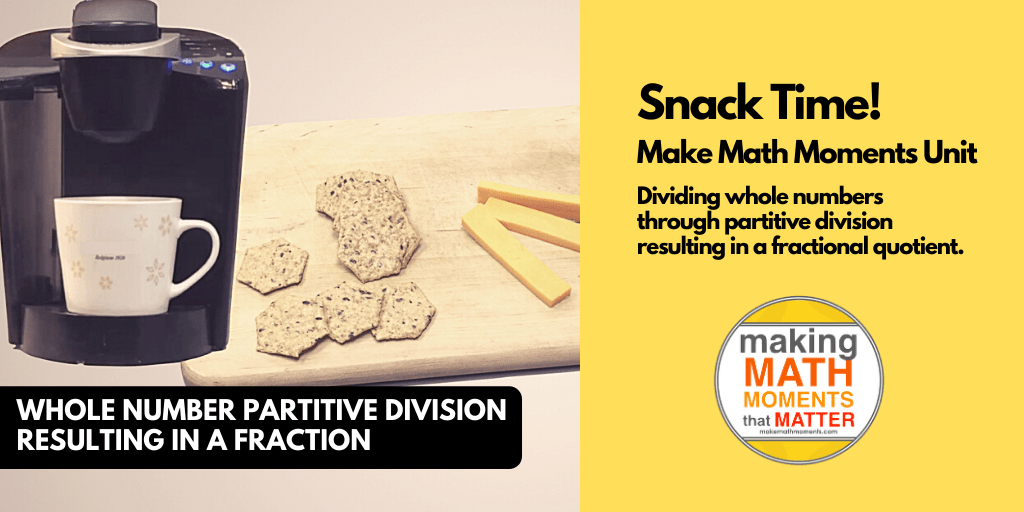How To Teach Exponents: Avoiding a Common Misconception When Teaching Through Problems
We’re teachers because we want to help students. Often times that drive we have to help our students can actually prevent them from learning and thinking.
When we’re teaching through problems we’ll feel that drive to step in and help students see how to solve a problem the most efficient way. This stepping in is what can rob a student of feeling connected to their own thinking.
A mistake I try to avoid now is rushing to get to the lesson or rushing to teach students the “way”. We at Make Math Moments call this Rushing To The Algorithm.
In this video Jon will outline his own journey of rushing to the algorithm and show an example of a recent lesson involving exponents where he avoided the rush and let students think while problem solving.
In particular, you’ll learn:
- Which lessons is great for introducing exponents to your students;
- How to structure your lessons so students think first;
- How to avoid rushing to the algorithm; and.
- How you can flip the script on your lesson and still “cover the curriculum/standards”
Resources Related To The Video
- Split 25 [Blog Post]
- MTH1W Grade 9 De-streamed Resources
- WRDSB Grade 9 Resources
- Learn about the Curiosity Path by reading our 3-Part Framework
- Visit Make Math Moments Problem Based Math Lessons page for other useful problem based units
- Take the pledge to transform your current math curriculum into those lessons that you’ve been searching the web for by applying the Curiosity Path.
- Up your pedagogical and content knowledge game by joining our Make Math Moments Teacher Academy!
Want to Run Problem Based Lessons Without a Hitch In Your Classroom?
DOWNLOAD THE 3-PART FRAMEWORK GUIDEBOOK

Why not bring the 3-Part Framework Guidebook with you?
Download the PDF so you can share with your professional learning network via print or email!
LESSONS TO MAKE MATH MOMENTS
Each lesson consists of:
Each Make Math Moments Problem Based Lesson consists of a Teacher Guide to lead you step-by-step through the planning process to ensure your lesson runs without a hitch!
Each Teacher Guide consists of:
- Intentionality of the lesson;
- A step-by-step walk through of each phase of the lesson;
- Visuals, animations, and videos unpacking big ideas, strategies, and models we intend to emerge during the lesson;
- Sample student approaches to assist in anticipating what your students might do;
- Resources and downloads including Keynote, Powerpoint, Media Files, and Teacher Guide printable PDF; and,
- Much more!
Each Make Math Moments Problem Based Lesson begins with a story, visual, video, or other method to Spark Curiosity through context.
Students will often Notice and Wonder before making an estimate to draw them in and invest in the problem.
After student voice has been heard and acknowledged, we will set students off on a Productive Struggle via a prompt related to the Spark context.
These prompts are given each lesson with the following conditions:
- No calculators are to be used; and,
- Students are to focus on how they can convince their math community that their solution is valid.
Students are left to engage in a productive struggle as the facilitator circulates to observe and engage in conversation as a means of assessing formatively.
The facilitator is instructed through the Teacher Guide on what specific strategies and models could be used to make connections and consolidate the learning from the lesson.
Often times, animations and walk through videos are provided in the Teacher Guide to assist with planning and delivering the consolidation.
A review image, video, or animation is provided as a conclusion to the task from the lesson.
While this might feel like a natural ending to the context students have been exploring, it is just the beginning as we look to leverage this context via extensions and additional lessons to dig deeper.
At the end of each lesson, consolidation prompts and/or extensions are crafted for students to purposefully practice and demonstrate their current understanding.
Facilitators are encouraged to collect these consolidation prompts as a means to engage in the assessment process and inform next moves for instruction.
In multi-day units of study, Math Talks are crafted to help build on the thinking from the previous day and build towards the next step in the developmental progression of the concept(s) we are exploring.
Each Math Talk is constructed as a string of related problems that build with intentionality to emerge specific big ideas, strategies, and mathematical models.
Make Math Moments Problem Based Lessons and Day 1 Teacher Guides are openly available for you to leverage and use with your students without becoming a Make Math Moments Academy Member.
Use our OPEN ACCESS multi-day problem based units!
Make Math Moments Problem Based Lessons and Day 1 Teacher Guides are openly available for you to leverage and use with your students without becoming a Make Math Moments Academy Member.
Partitive Division Resulting in a Fraction
Equivalence and Algebraic Substitution
Represent Categorical Data & Explore Mean
Downloadable resources including blackline masters, handouts, printable Tips Sheets, slide shows, and media files do require a Make Math Moments Academy Membership.
Use our OPEN ACCESS multi-day problem based units!




